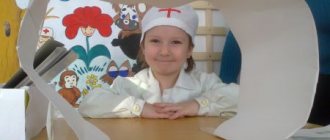- Reports and messages
- Geography
- Sand mineral
Sand is a fossil consisting of small grains of rock that accumulate and form grains of sand.
Wave impacts, weathering, volcanic eruptions and earthquakes erode rocks and contribute to the formation of sand. Its main component is silicon dioxide (quartz), which also includes particles of mica and feldspar. Sand comes in different sizes: from 0.2 to 5mm. It is distributed throughout the world. The shape of sand grains can be acute or rounded, depending on its origin. Depending on the location, sand can be river, sea, ravine, or mountain.
The sand at the bottom of rivers and other bodies of water has a round shape. It is clean, does not contain clay impurities or large inclusions, and is gray or yellow in color. Therefore, river sand is actively mined (washed). This is a universal material, but at the same time it is a more expensive type of sand.
This rock is also obtained from quarries, then it is specially sifted to remove impurities. Or washed to remove clay.
There is so-called artificial sand. It is a crushed rock of granite, marble or limestone. Such grains of sand have sharp corners and grains of varying sizes. Because of this, plaster based on artificial sand produces an interesting texture; it is used for exterior decoration of buildings.
Sand is widely used in construction. It is part of cement-based mortars used for foundation work and tiling. Add sand and concrete to the asphalt mixture. Before construction, a layer of sand is often washed over the site. With the help of tiny grains of sand supplied by a strong stream of air, various surfaces are processed: glass, metal, stones. Due to the high abrasiveness of sand, it removes all dirt, rust, and prepares the surface for applying various coatings.
Without this breed it is impossible to imagine a single children's sandbox or yard paths. Sand sculptures have long gone beyond children's play. Now world championships are held among masters of this art using sand and water. Sandy beaches are a favorite place for relaxation and entertainment. Beach volleyball competitions are held only on sandy courts.
It is also added to cat litter, as well as to the soil in greenhouses and for indoor plants. You can't grow a cactus on a windowsill without sand.
Sand is the main component for glass production. It is mixed with soda and calcium carbonate and this mixture is melted at a temperature of about 2000 degrees.
Another area of its application is water filtration and purification.
Black sand is found in some parts of the planet and can be highly radioactive. It consists of small particles of dark-colored minerals. There are quicksands, which, due to the fact that they contain a lot of air or steam, have the ability to suck deep into everything that gets into them. They are very dangerous for humans.
In the sands
The desert is yellow and blue. Yellow—sands underfoot, around as far as the eye can see, and even further beyond the horizon. Blue sky. In the desert it is as vast as the sands.
Everything in the desert is unusual and incomprehensible. Ridges of golden sand - dunes. White swamps covered with salt are salt marshes. Groves of crooked, half-dried trees—saxaul. And takyrs - clay bald spots, smooth and strong, like asphalt.
Streams and lakes there are without water—in summer the water dries up. Trees without shade - they have no leaves. The winds are not refreshing - they are hot, like fire. The rains dry up before they reach the ground. Even good weather in the desert is not called dry and sunny, but cloudy and damp! Only in spring and autumn can you see green grass in the desert.
The stones in the desert turned black from the sun, the clay cracked from the heat. The bushes look like coils of barbed wire. Empty in the desert.
But this is only at first glance. The desert has many amazing inhabitants - birds, animals, lizards and beetles. And amazing things happen.
Tips for choosing a toy
Such play sets are becoming increasingly popular among parents. Therefore, manufacturers offer a wide selection of these products. They often differ greatly in price. In order not to make a mistake with your choice, you must first familiarize yourself with the characteristics of the toys and read reviews about them. The most popular, according to parents, are four brands:
- Swiss sand Kinetic sand.
- A Russian-made toy called “Space Sand for Children.”
- Korean Living sands set.
- Swedish product Waba fun.
Peschankin's house
The Gerbil sat by the hole and rejoiced: how nice it is in the sun! Beep, beep, beep! You warm one side, then the other. Either with your back up, or with your stomach. And if it weren’t for work and worries, I would be turning from side to side all day. But things to do, things to do—you have to gnaw the grass and carry it to the mink. And then everyone gets in the way! Do you think the Eagle is just circling in the sky? It is he who is looking out for us gerbils. Do you think the Dune Cat is just sitting behind a bush? He's also watching for us. But I’m not very afraid of the Eagle and the Cat; they, being huge, cannot crawl into my hole. The main thing for me is not to overlook Varan! You can’t escape him even in a hole. Oh - beep, beep! - and he’s right there! The toothy villain has sneaked up!
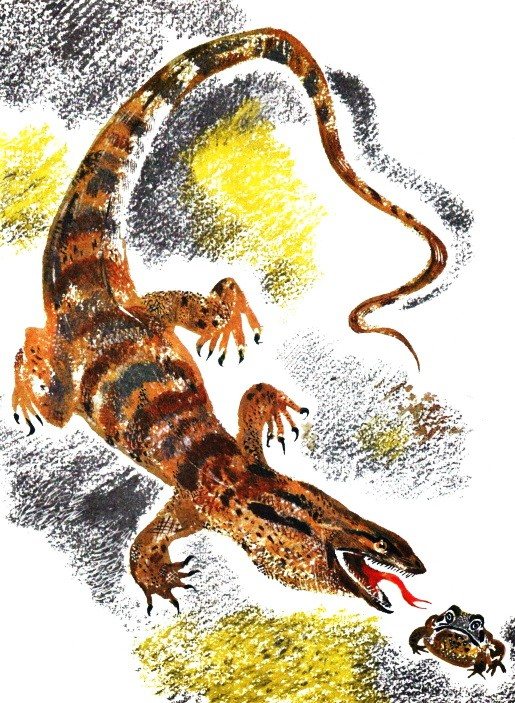
The Gerbil rushed into the hole - as if she had fallen through the ground. Varan is behind her. He stuck the pike's head into the hole and hissed through his frequent teeth:
- I hear, I hear - she hid not far. Well, come out in a good way! Don't you want to? Then I will come to you myself!
The gerbil's hole is a whole underground labyrinth: passages, dead ends, holes. And there is someone living everywhere. Varan is making his way through the underground passages, and on the way is Toad.
-What kind of stuffed, bug-eyed thing is this? - Varan hisses. “It’s also spotted!”
“I’m not a stuffed animal,” answers the Toad, “I’m the Green Toad, Peschankin’s little resident.”
- What are you doing here, Green Toad, huh?
“I spend the night here, or rather the day.” I am a delicate creature, my skin is thin, it’s impossible for me to be in the sun during the day - I dry out. That's why I sleep during the day and walk at night. In the morning we go back to the hole. I occupy a corner in the burrow of the Gerbil. The most raw.
- Where is your mistress? - Varan hisses. - Show me her, I miss her...
- I won’t show you, no way! The gerbil sheltered me, and I did her evil for good? I don't want to be ungrateful!
“Then I’ll eat you, right in your damp and dark corner!” - Varan got angry. “I’ll eat it now!”
“And I’m tasteless, inedible,” the Toad purred, “your stomach will hurt.”
Varan clicked his teeth, pushed the Toad away with his clawed paw, and let’s continue to make our way through the labyrinth. On his way is a Scarab Beetle. Varan looked at him and asked:
- Who are you, dung beetle, or what?
The scarab beetle was offended:
- I am the sacred Scarab Beetle! In ancient times, people decorated palaces with my images.
Varan was very surprised:
- If you are so famous, then why don’t you live in a palace, but scurry around in a dark hole?
- Me? — The Scarab Beetle was confused. “So, as you rightly noted, I have another name—Dung Beetle.” So here I am... I'm collecting something here - I need something...
Varan grinned.
- So I need to eat. And the Gerbil ran away. Answer, where did she hide?
“I told you everything,” the Dung Beetle creaked. “But I won’t tell you this.” I don't betray my friends.
“If you don’t tell me, others will,” hissed Varan, “there are a lot of you here in the hole, hangers-on.” Hey butterflies, have you seen the Gerbil?
In the Gerbil's hole, moths were hiding from the heat and sunlight. They sat on the wall of the hole and moved their antennae.
- We didn't see anything. We didn’t hear anything, we don’t know anything!” the butterflies rustled. “If you touch us, you’ll choke, choke, suffocate!”
Varan himself knew that the wings of butterflies are dry, hard and covered in pollen. He began to push his way further. He sees the Kamenka bird hiding in the hole. He asks her tenderly:
- And you, Dancer Wheatear, what are you doing in the hole? A? Are you catching butterflies?
“No,” Kamenka answers, “I have a nest here in a snout, and the testicles are in the nest.”
- Yeah, I let it slip! - Varan was delighted. “Where is the nest?” I haven’t swallowed eggs for a long time, I’m even a little hoarse. Now I’ll soften my throat!
Kamenka became afraid and began to beg Varan:
“I,” he says, “will do everything for you, just don’t touch the nest.”
“Okay,” Varan answers, “I won’t touch your nest if you show me the Gerbil.” If you don't show it, beware!
“I’ll show you, I’ll show you,” Kamenka squeaked. “She’s wearing that snatch.” Hurry up!
- That's how cleverly I intimidated you! - Varan was delighted. - Now the Gerbil is mine!
And he climbed, hissing, into the hole. And Kamenka looks after him and giggles. She knows who is sitting there in the hole. Varana sent there on purpose to save the Gerbil.
Varan senses that someone is sitting in the hole, but who is not visible. I just wanted to ask, and they asked him:
- Who are you?
- I? — Varan was surprised. “I am the terror of gophers and gerbils.” I'm the biggest lizard in the desert! Shhh!!!
“And I,” he hears in response, “A ferret-bandage!” Thunderstorm of gerbils, gophers and monitor lizards!
Varan got scared and spoke in a whisper:
- Give me my Gerbil and I’ll leave.
And Bandaging answers him:
- There’s nothing here that’s yours! Everything here is mine! I'm hunting here! And you are my prey!
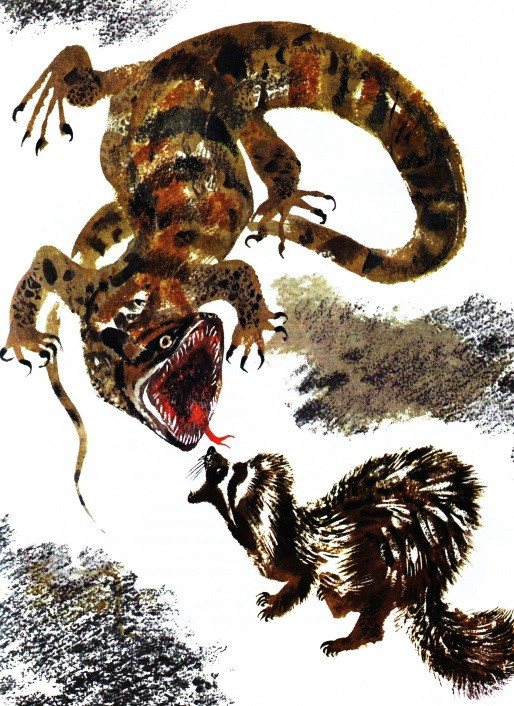
Varan and Bandaging grappled - dust swirled through the underground passages. Everyone around is quiet, listening - who is who? And the Gerbil listens. She crawled out of the hole a long time ago and is sitting at the top.
“Fear takes over the way they fight,” whispers the Gerbil.
Maybe they too, the predators, will be overcome by fear and will drive each other away from my hole? Oh, I wish I could live peacefully, in harmony with all my tenants. I have them, no one gave them to Varan.
Here the fight underground ended, and Perevyazka and Varan fled in different directions. The monitor lizard next to the Gerbil poked out from under the ground.
- Hey, Gerbil, where did Bandage run off to?
- To the left! - Gerbil was scared.
- Then I should turn right! - Varan snorted and dusted across the sands.
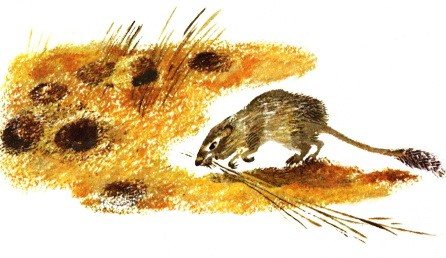
Here Bandage jumped out of the hole:
- Hey, Gerbil, where did Varan run?
- He ran in that direction! - Gerbil was scared again.
- Once in one, then in another for me! - Bandage squealed and galloped away.
The gerbil looked after them, calmed down, and got down to business. Mow grass with your teeth, carry it into a hole with your teeth.
Turtle
A strange mark in the sand - as if a toy truck had driven by. It was a turtle crawling through. Her long winter sleep is over. The turtle crawled out of the hole in which it had been sleeping for six months and went to look for fresh grass.
Those who are accustomed to considering turtles to be slow would be surprised - the turtle almost ran! Those who consider turtles clumsy would also be surprised - the turtle deftly climbed the steepest slopes. True, one day she fell, rolled down and turned over on her back. And then those who are accustomed to considering turtles to be clumsy would be surprised: the turtle stretched out its neck, rested its head on the sand - once! - and got to her feet! And all this was visible from her clear footprints.
And here is the turtle itself. Briskly striding along the sand. On her way there is a lizard - a long-eared round-headed lizard. Standing on your heels - hot! - and fans himself with his tail - it’s hot! I saw a turtle and my mouth was wide open! And even wider: at the corners of her mouth, two red folds fanned out, like ears. Mouth with ears!
But the turtle didn’t even turn to the side. She knew that the roundhead was only scary in appearance, but itself harmless. And she scares... with fear!
The sand hare stood up in a column - looking at the turtle. The thin-toed gopher has stopped digging in the sand and is also looking at the turtle. A saxaul jay rushed past. But the turtle did not look at them. Hurry up and find some grass: I haven’t drunk or eaten for six months!
I met an agama lizard on the way. She pouted, stood up on crooked legs, and the skin on her throat sagged, like a blue beard. And the sides turned blue. But this didn’t scare the turtle - it walked straight ahead!
The scorpion was not afraid, the phalanx was not afraid. She didn’t even notice the sand boa, although it crawled very close to her.
But when the eagle’s shadow covered it, the turtle quickly hid its legs and head in its shell—as if it had darted into the house and slammed the door behind itself!
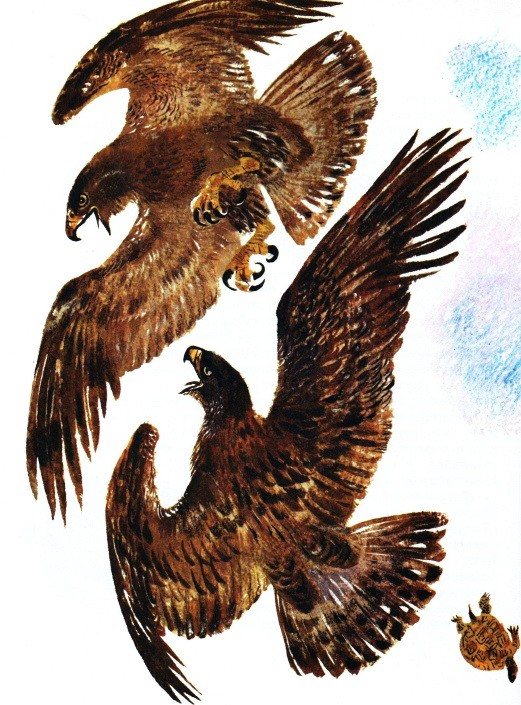
The eagle fell from above. He clawed the turtle, took off and carried it to a distant rock, where he always dealt with his prey. But then another eagle rushed towards him and began to take away his spoils. The eagles grappled in the air, screaming hoarsely, and the turtle fell down - right into the thick grass. The one I've been looking for for so long!
As a reminder of the adventure, long scratches remained on the shell - traces of eagle claws.
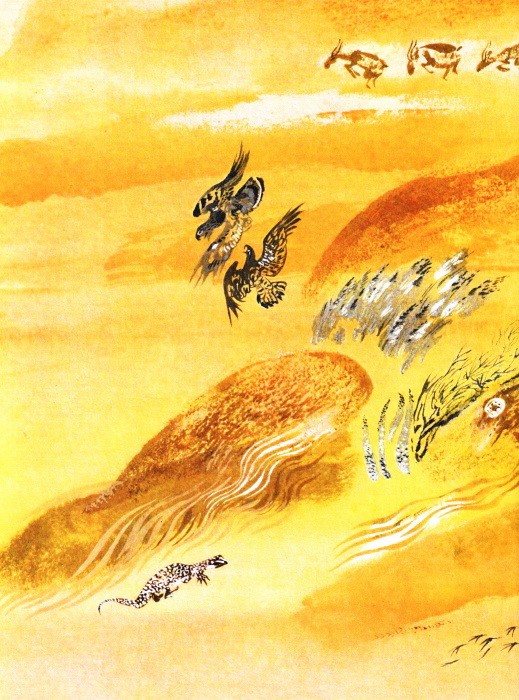
Conversations in the Sands

HAXAUL SPARROW AND DESERT SPARROW
- What a cunning thing I did, neighbor, - I went and built a nest in a narrow hollow! Now even the dune cat is not scary to me!
- And I, a neighbor, came up with an even more cunning idea. I built my nest under an eagle's nest! Now I’m not just like a dune cat, now I even have a caracal - I don’t care about the desert lynx. The eagles are now guarding my nest!
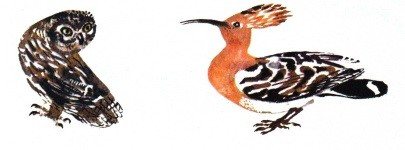
OWL AND HOOHOOE
- Why are you, Hoopoe, endlessly shouting: “It’s bad here!” It’s bad here!”
- Because, Owl, it’s good here!
“I would then shout: “Okay, here!” Okay, here!”
- Look what you are! So that other hoopoes would hear and drive me away from a good place? Never! “It’s bad here! It’s bad here!”
HEDGEHOG AND TURTLE
- Hey, Turtle, what if the Fox grabs you, huh?
“And I, Hedgehog, will hide in my bone shell and slam the entrance with my paws.” The fox will click its teeth and run after you.
- And I’ll shrink into a bun and put out the thorns. The fox will prick his nose, cry, and leave with nothing.
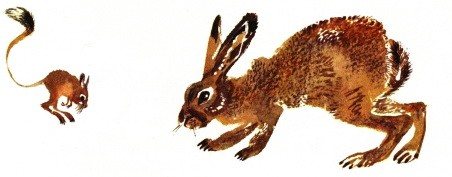
SANDTICK HARE AND FULL-FOOT JERBAI
- You, Jerboa, have four paws, but the footprints in the sand are only from two. Where did you put your two legs?
- And for some reason, Hare, your hind paws are ahead of your front paws on the tracks. Maybe you're running tail first?
“It’s my speed, Jerboa: I’m in such a hurry that my hind legs overtake my front legs!”
- And for me, Hare, it’s about speed: I gallop on the rear ones so that the front ones don’t hold me up!
Terms of use
How can you play with kinetic sand? Typically, gameplay is limited by human imagination. The main thing is to use the “magic” sand correctly. Otherwise, it will lose its properties, albeit temporarily.
Here are the basic rules that everyone needs to remember:
- Sand should be used at room temperature.
- In conditions of low humidity, the properties of the “magic toy” are reduced - plasticity is lost. To restore it, you need to add a few drops of water.
- Before using the “toy”, you need to thoroughly wash and dry the playing surface. The same will have to be done with your hands.
- It is recommended to use containers with lids to store sand.
That's all. But how to play with kinetic sand? Next, the most common options for children's development will be presented.
Mysterious stories
MISSING SHIRT
A lizard lives in the sand - the skink gecko. A very beautiful gecko. The gecko's leather shirt is especially good - all covered in gold and copper scales and buttons. And the pants are all over the place: scales, like frills and frills.
But everything has its time: the shirt has faded, the pants are dirty, the sleeves on the elbows are frayed. It's time to change clothes.
For a gecko, changing a suit is not a task. You need to hide in a hole away from prying eyes, and pull off your worn-out skin-clothes with your paws. And underneath it, a new one is already ready: clean, with shiny scales, with white frills and frills on the pants.
The gecko did just that: he hid in a dark hole and began to change clothes. And here is a gecko in everything new.
There is no old shirt in the hole. Where's the old shirt?
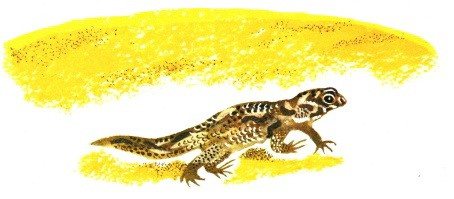
(Guess)
An old shirt, of course, cannot be darned or washed by a gecko. But it’s a shame to throw it away!
As soon as the gecko pulls it off, he takes it in his front paws, folds it into a ball, and even into his mouth! If he eats the whole shirt, he will also lick his lips. Don't let the goodness go to waste!
WHERE TO HIDE?
Not a dense tree, not a green bush—just sand all around. Where can I find shadow here? It’s impossible to live in such heat, where can you hide from the sun? As soon as the inhabitants of the sands are not fried?

(Guess)
If the inhabitants of the sands did not know where to hide from the sun, then many would actually be roasted alive.
Gerbils, ground squirrels, moths, and beetles hide in holes. Boa constrictors and skink geckos burrow deep into the sand, into the wet layer. Small birds hide in holes, in wells, in the shadow of a stone. And eagles sometimes circle in the shadow of a high cloud!
WHY DOES THE JERBAE HAVE A TAIL?
The jerboa has a tail twice as long as its body: it is clear that it really needs it. What for? Why does a jerboa need a tail?
A horse's tail is a fly swatter, a fish's is an oar, a woodpecker's is a prop. What about the jerboa? There are no flies at night, there is nowhere for him to swim and the jerboa, like a woodpecker, does not climb trees. And the tail is longer than everyone else’s!
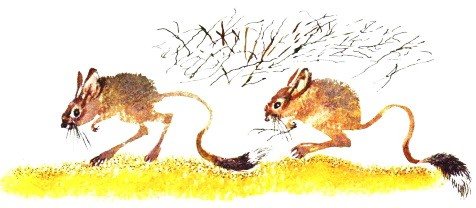
(Guess)
The jerboa sits on its hind legs, holds a twig in its front legs and gnaws it. And to make it more comfortable to sit, it rests on its tail. His tail - SUPPORT AND PUSHER - helps to push off from the sand during the first jump. And when he jumps on two legs - and this is more difficult than jumping on four! - the tail helps him maintain balance - the tail is a BALANCER. And that is not all. At the end of the tail the jerboa has a white tassel. For friends, this is an INDEX - I’m here, follow me! And for enemies - a DECEIVER. He will turn his white tassel to the right as he runs, and he will jump to the left.
Age in practice
At what age can you play with kinetic sand? We have read the manufacturers' recommendations, but the instructions remain the same. Not everyone follows them in real life. And there's nothing wrong with that.
Magic sand can be used when a child begins to be interested in the sandbox. Some people buy this “toy” for the development of babies aged 10-12 months.
However, a lot depends on the child. It is not recommended for children under three years old to play with magic sand without supervision. Until this point, use is not prohibited, but only under close adult supervision.
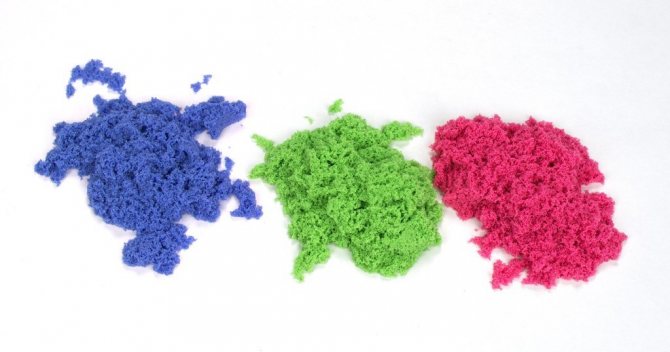
Important: such products are great for developing fine motor skills.

